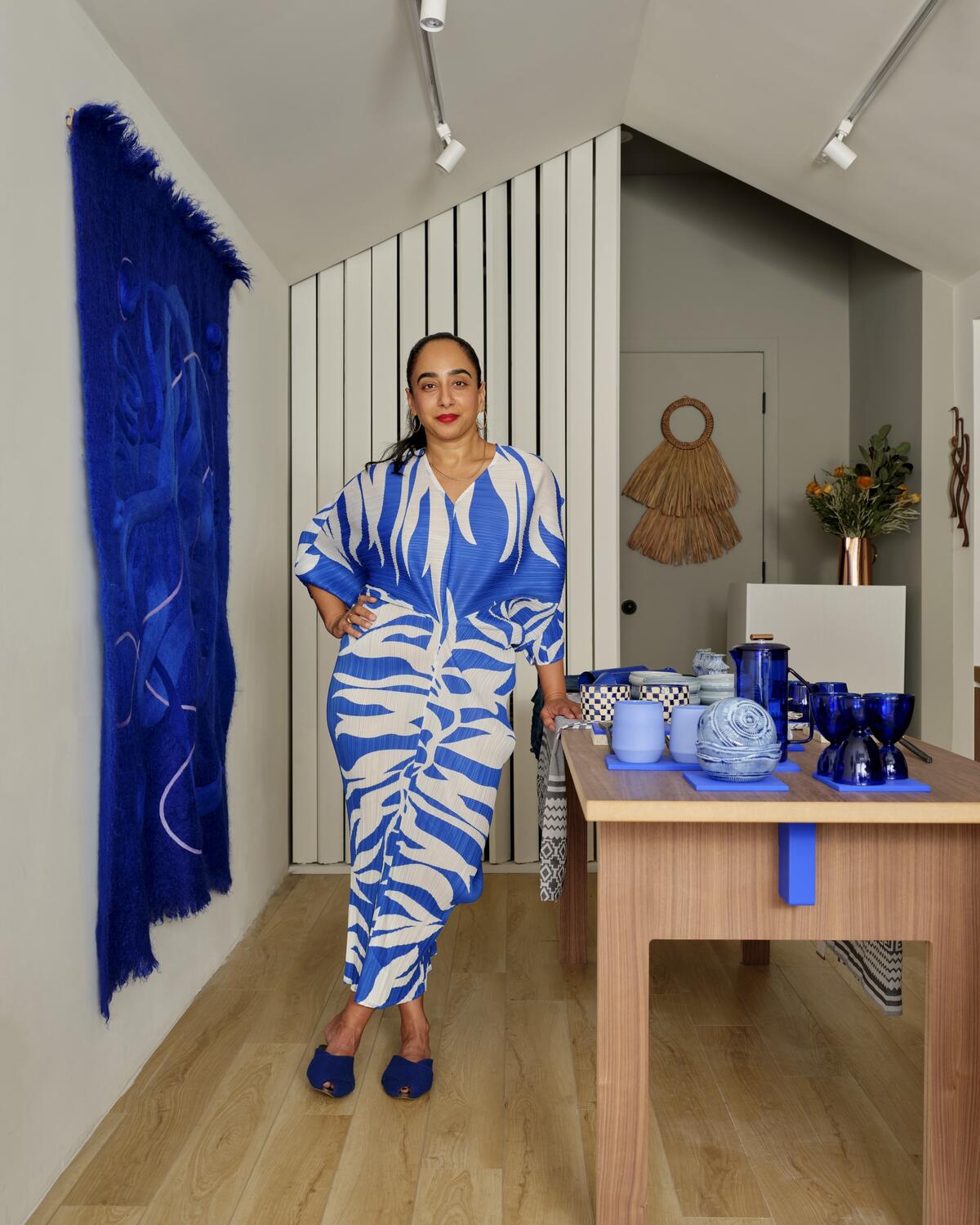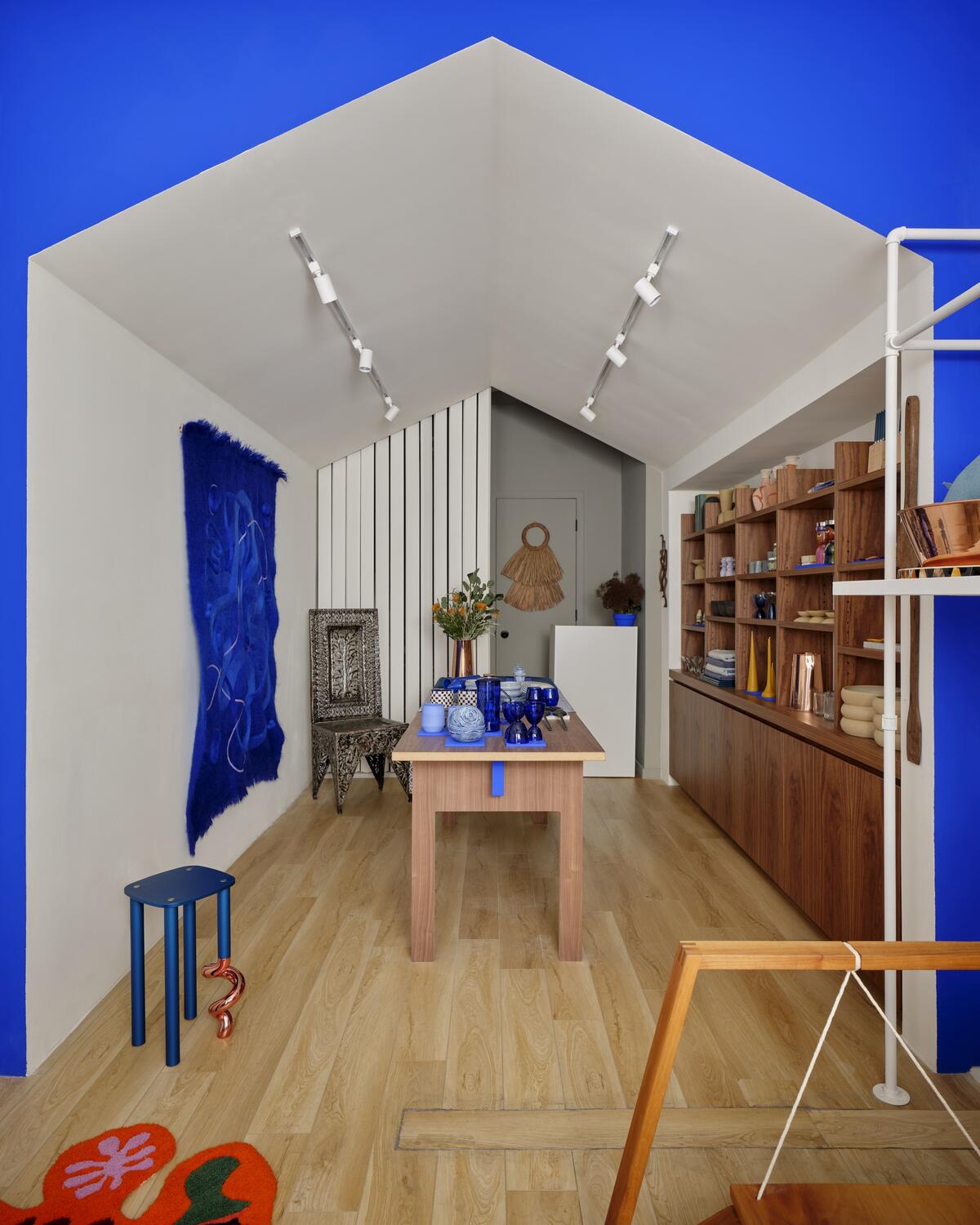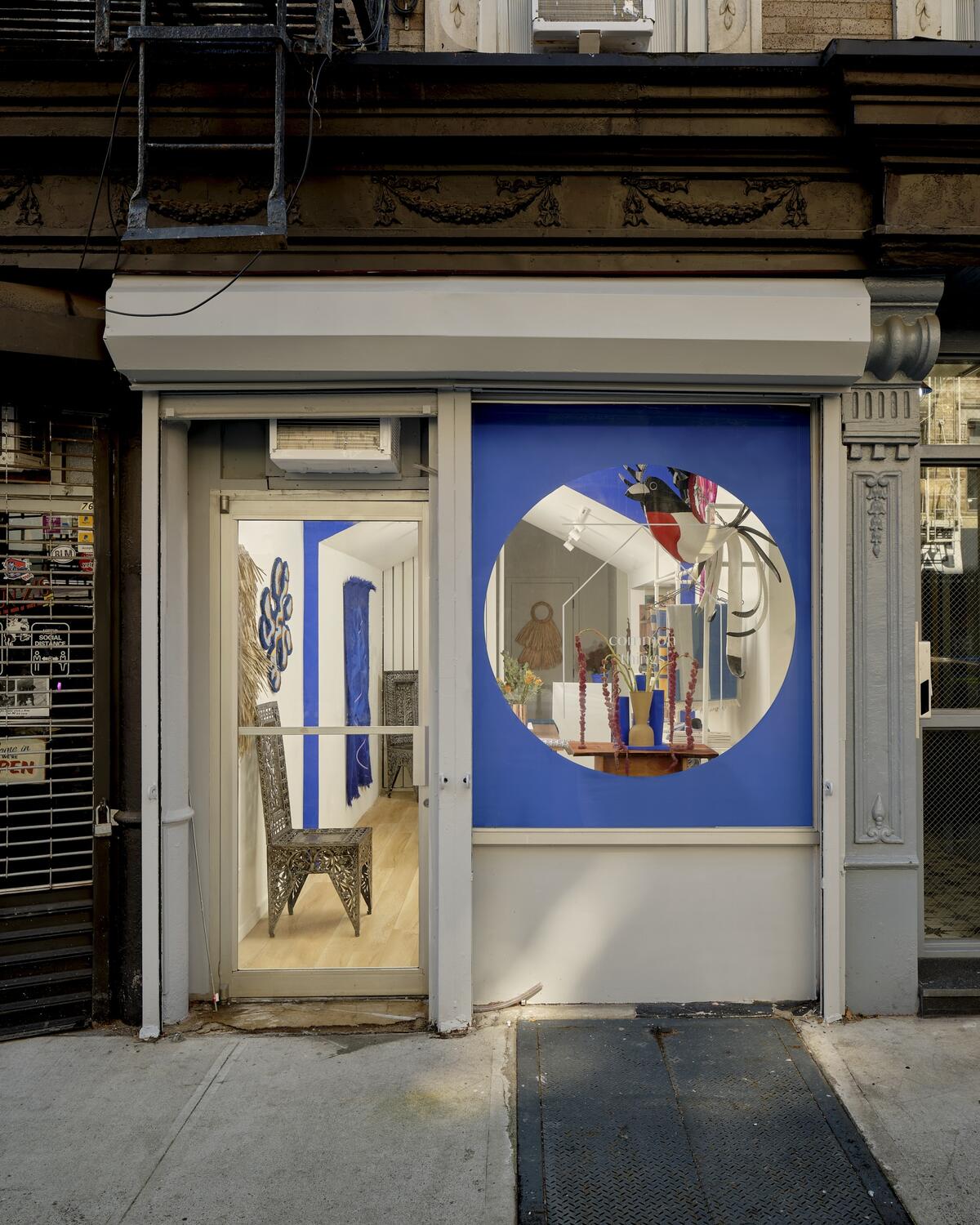In Business of Home’s series Shop Talk, we chat with owners of home furnishings stores across the country to hear about their hard-won lessons and challenges, big and small. This week we spoke with architect and designer Komal Kehar of the New York shop Common Things.

The store takes its visual and philosophical cues from two 20th century artists: A color throughline of electric blue nods to French painter Yves Klein, while Chilean poet Pablo Neruda inspired the celebration of beautiful everyday objects. The shop is named after Neruda’s book Odes to Common Things, a collection of poems dedicated to items like chairs, scissors, soap and boxes of tea. The merchandise is hardly common, though—even a set of backscratchers looks like art when hung on the shop’s wall. Kehar, who is also the founder of design and construction management studio Mira Projects, discusses finding these items, learning from her East Village neighbors, and throwing events in the under-200-square-foot space.
How did the shop come about?
I always wanted to have a shop, but it’s one of those dreams you have—that’s what other people do. During the pandemic, when things [at my studio] had slowed down, I was helping out a broker in the East Village for six months until my normal work picked up, and we became friends. I asked her about this space where a woman was doing private facials, but she was never open. I kept inquiring, and my friend was like, “It seems like you want it.” And I said, “I kind of do! I guess I could use it as an office.” But then it’s just the perfect storefront. So it was backwards: I didn’t have the idea fleshed out; it grew from having the space.
It’s such a tiny spot. How is it divided up now?
The store is 22 feet long and only 9 feet wide. I maximized the back-of-house space as much as I could: I blew out a closet and made a kitchenette, and added some shelving in the bathroom. There’s not a ton of inventory space, but I try not to keep too much inventory anyway. Having worked in retail, I understood the different ways you can hide things. The store is set up in thirds—the front portion with the window has a unit with some pantry items, there’s an enclosure with a sort of house-shaped insert, and then there’s a slotted wall, and behind that is the back-of-house space and a bathroom.
What is the merchandise like?
I wanted to make sure I was pulling from a diverse group of people with a global perspective. Part of it has to do with my own experience, in the sense that I’m part of a diaspora. Having personal connections from all over the world helped me source—I wanted to make sure we had a broad range of representation, and I wanted to focus on home goods specifically; I didn’t want to muddy it up by having some jewelry or apparel. So it’s a lot of tabletop, glasses and ceramics. There are decorative items that could be kind of utilitarian, like these backscratchers from Thailand that are carved in teak. I try to focus on artisans who are not necessarily easily found online.
How do you go about sourcing?
Sometimes it’s evoked just by materiality. I was interested in grass traditions and did some research, and I found a company in Nagaland in India that does really beautiful grass-weaving work that’s indigenous to the area, and they were able to ship to New York. Sometimes it’s friends of friends—that’s how I found a designer in Mexico City who makes carpets at home, sourcing yarn that’s naturally dyed with plant-based and organic materials. I do source sometimes through larger wholesale websites, like Faire and Power by People.

I’ve seen your vibe described as an “empathetic aesthetic.” What does that mean?
The store is about looking at the common threads that connect us. My perspective is that whatever our differences might be, we have things that unify us in our daily rituals. We might use different types of vessels, but we all do use vessels, for example. There’s an empathy in celebrating the things that we all have in common.
There’s also the choice of the color blue. I was drawn to the Yves Klein blue pigment from a project I had worked on a long time ago. Cross-culturally, blue is unifying—blue sky, blue water—so I liked that notion. Having a throughline color works well in a small shop, because it otherwise becomes a little erratic. The cabinet in the shop could easily be related back to the concept of the “cabinet of curiosities,” but I think that’s rooted in a colonial mindset. I’m coming from it differently, respecting traditions and not seeing [these objects] as oddities.
Who is your typical customer?
I’m still trying to figure that out! Foot traffic is driving the store right now—people from the neighborhood, but other designers and creatives come in.
Is there a certain item or category that moves very quickly?
I feel like we’re in a funny climate economically, so I don’t know if things are flying off the shelf. I think it has to do with the brand’s own marketing efforts, but something that does well is Kolkata Chai, a local chai shop in the East Village. I carry their tea because I like it, and their items sell really well. I think that’s their brand recognition. Otherwise it’s the blue items, the blue cups. People love them, and I’ve had to restock a few times.
What about your personal favorite category? What are the things you gravitate toward?
I love textiles. I carry a [Brazilian] brand called Fouta Harissa, [whose] hand-loomed towels and blankets [are made in Tunisia]. I love the blankets because of the weight, the way they feel and the integrity with which they’re made. There’s a ceramic artist based in Brooklyn named Ash Chen whose work I love. It’s whimsical and fun. I like the things that are not as serious, that bring humor into the home.
What’s it like to operate in the East Village? I’m so glad places like yours can still exist in New York.
Well, I’m on a great block—on East 7th between First and Second Avenue—and there are some great shops and a real community feel. My neighbor, a shop called Enz’s, has been operating here for 50 years. She was one of the first to import Vivienne Westwood to New York back in the day. [There’s also] Tokio7, a very famous consignment shop, and [the owner] makes bespoke hats. My friend’s brokerage is one door down. I’m friendly with the owner of one of the hair salons, and I renovated [the space] for him during Covid. There are a lot of people with interesting perspectives on that block.
We [neighbors] talk about that a lot, actually—how people are appreciative that shops like us exist, but it doesn’t translate to [customer] conversion all the time. We’re a little like, “Well, if you want us to keep existing, maybe you should buy something.” But I’m not really a heavy salesperson. We’ve hit a sweet spot as far as our overhead, but can it go on forever? I hope so. It would be a shame if that whole block became 7-Elevens.
Tell me about your events. I saw you’re holding a workshop right now.
It’s called “Floriography.” I discovered that word and books on floriography recently, and I love the idea of communicating through flowers. I paired with Ron Hansford, an amazing florist with 30 years of experience working in florals in New York for all kinds of high-end events. Since our space is small, we can only accept eight people at a time. We did our first workshop, and it’s great because you can’t not leave feeling uplifted. He’s bringing seasonal blooms that relate specifically to New York during each month—March, April, May—and what’s available changes.

Do you have other events in the pipeline?
We often partner with our vendors to do pop-ups. We’ve done one with Domingo Ceramics, [created by] a woman from Argentina named Ivana Brenner, who works out of Brooklyn. We also did a pop-up with Fouta Harissa … and we’ll have one with Ash Chen.
[This month] we’re doing a lighting showcase called “Finding the Light,” where we’re showcasing four designers with very different work. One of them, Juno Shen, does these vertical twisted neon pieces that are really beautiful, and we’re working with a lighting designer named Ryoko Nakamura, based in Kyoto, who’s going to be showing lighting made with very specific paper. Blanca Codina likes to subvert everyday objects and their function, so she has a table lamp that looks very much like a faucet. Then there’s Edition Cf, a ceramic artist out of Los Angeles whose pieces I carry—[she’s] starting to develop lamps, so they’ll be featured as well.
It’s been under a year, but you worked in retail for a long time before this. Has anything surprised you already?
Building out the shop came quite easily. The learning curve is the e-commerce side, and managing inventory—figuring out the balance of things, and when to order what. The space is small, so I have to be smart about how we do those types of things. And all the support collateral you need to operate a store that you could take for granted, like making sure you have enough bags, enough stickers. The weekly operational needs that have to be attended to are never-ending.
With such a small space, do you have staff?
It’s me managing the operations for the most part, but I have friends helping me during the weekdays. I had the utopian idea that I would be able to work from the store and be at the store at the same time, but when I’m at the store, I can’t focus on a lot of other things. It’s not conducive as a workspace unless the store is closed, so I’ve definitely had to tap into friends who are available to help.
What’s your favorite day at the shop?
I never thought I would say this, but I think it’s weather-dependent. When I’m opening on a sunny Saturday and I can leave the door open, that is an auspicious start. It feels like Mister Rogers’ Neighborhood or something. All the shops are open on Saturdays, and when the weather is nice, there are a lot more people on the street. You feel that New York energy. People come in and want to have nice conversations; they’re interested in knowing more about the items. I love when there’s a sense of discovery, because living in an online world, you feel you have access to everything, but you sometimes don’t. We all live with our blinders. So it’s always nice when people are appreciative of or having conversations about the makers.




























